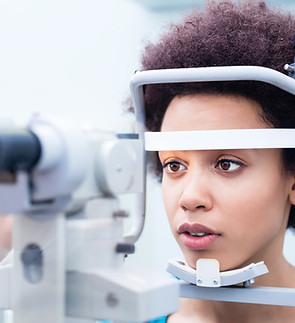Cataracts
Cataracts are a common eye condition characterized by the clouding of the lens, leading to vision impairment. They often develop slowly and can affect one or both eyes. Cataracts can interfere with your ability to see clearly and perform daily activities.
Recognizing Symptoms
Keep an eye out for these common signs and symptoms of cataracts:
-
Blurred Vision: Objects may appear hazy or unclear, as if you're looking through a foggy window.
-
Decreased Color Perception: Colors may seem faded or less vibrant than usual.
-
Glare and Sensitivity to Light: You may experience increased sensitivity to bright lights or glare.
-
Difficulty Seeing at Night: Night vision can be challenging, with poor visibility and reduced contrast.
Regular eye examinations are essential for assessing your eye health, including the presence of cataracts. Here's why you should prioritize eye exams:
-
Early Detection: Eye exams can detect cataracts at an early stage, allowing for prompt intervention and treatment.
-
Overall Eye Health: Eye exams evaluate the overall health of your eyes and check for complications that can arise from cataracts, helping identify other potential complications.
-
Vision Correction: Eye exams help determine if your visual changes are due to cataracts or other vision issues that can be addressed through appropriate prescription glasses or contact lenses.
-
Treatment Planning: If cataracts are detected, your eye care professional can guide you through the available treatment options and discuss the best course of action tailored to your specific needs.
Remember, regular eye exams are crucial, even if you haven't noticed any significant changes in your vision. Don't hesitate to schedule an appointment with an eye care professional who can assess your eye health and provide appropriate guidance.
Diabetic Eye Exams
Yearly eye exams are especially important for patients with diabetes as they are at a higher risk of developing eye problems. Diabetes can damage blood vessels in the retina, the light-sensitive layer of tissue at the back of the eye, leading to diabetic retinopathy, which is the leading cause of blindness in working-age adults. Patient with Diabetes are also at higher risk of developing glaucoma.
During an eye exam, the optometrist will check for signs of diabetic retinopathy, including:
-
Leaking blood vessels: Diabetes can cause the blood vessels in the retina to weaken and leak fluid, which can cause swelling in the macula, the part of the retina responsible for sharp, central vision.
-
Abnormal blood vessels: Diabetes can also cause the growth of new blood vessels in the retina, which can bleed and cause vision loss.
-
Retinal detachment: Diabetic retinopathy can cause the retina to detach from the back of the eye, which can lead to blindness.
The optometrist may use specialized equipment to take detailed photographs of the retina, and may use techniques like fundus photography, FAF, or optical coherence tomography to check for diabetic retinopathy.
Early detection and treatment of diabetic retinopathy is crucial to prevent vision loss. Treatment options may include laser therapy, injections, or surgery.
It's important for people with diabetes to have a comprehensive eye exam at least once a year or as often as your optometrist recommends based on your individual needs and the progress of the disease. It is also important to keep blood sugar levels well-controlled, and to maintain a healthy diet and lifestyle to slow the progression of diabetic retinopathy.




